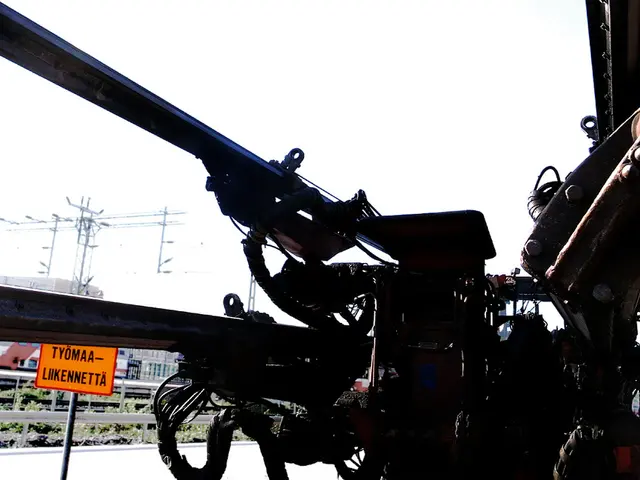Animals Upset - Pictures Cause Animal Disturbance - Images Capturing Natural Unrest - Photos Potentially Affecting Wildlife Behavior
Wildlife Photography: Balancing Act Between Conservation and Social Media
In the digital age, people are increasingly snapping and sharing images of wildlife, often on social media platforms. This trend, while promoting awareness about endangered species, can also have detrimental effects on nature conservation.
Reports suggest that some individuals disregard nature conservation rules while pursuing the perfect photograph. This is not limited to isolated incidents but can have severe consequences, as warned by experts. nature reserves across the globe are already imposing measures to curb such acts.
The ubiquitous smartphone has made it natural for many to document and share every experience, with nature serving as a backdrop or the subject. Particularly popular are images of animals, with their cuteness or spectacular appearances grabbing widespread attention. Christine Geidel, from the Bavarian State Association for the Protection of Birds and Nature, remarks, "Basically, anything particularly cute or spectacular brings in clicks."
Although instances like the controversial video of a US influencer catching a wombat joey in Australia might be rare in Germany, they are a reminder of the potential harm such actions can cause. A significant concern is the disturbance of animals during their critical breeding seasons, which can lead to failed breeding or even abandonment of nests.
For instance, in Germany, eagle owl and Tengmalm's owl nests have been disrupted by enthusiasts seeking photographic opportunities. In extreme cases, the platform 'Ornitho.de' has had to block observation reports of the little owl during the breeding season and at sleeping places due to disturbances and siege-like conditions.
Similarly, the gathering places of cranes before their migration to wintering grounds often attract numerous photographers, causing excessive disturbance to the animals. To manage visitor flows, the Müritz National Park in Mecklenburg-Vorpommern offers guided tours with limited capacity.
Drones have also been used to pursue endangered species like the osprey, leading to breeding failures, a particularly tragic outcome. Despite most people following the rule of taking photos only from paths and viewing points, some ignore this rule for that elusive perfect shot, causing stress to animals and potentially driving them away or disrupting their reproduction.
Henning Werth, who coordinates the work of rangers in the Allgäu High Alps nature reserve, shares concerns about the competition among photographers to capture certain species. The colorful and shy stone grouse and displaying black grouse are examples of species that are particularly appealing to photographers, leading them to advance to breeding areas or display sites, which is strictly prohibited.
To balance the positive impact of photography in appreciating nature with its potential negative effects, the Society of Nature Photography (GDT) encourages ethical photography practices. While rare or attractive species have always been highly sought after, obtaining a photo often involves significant effort. More often, it's certain landscape motifs or locations that are overly visited due to their popularity, a trend critically discussed within the GDT.
In the Allgäu High Alps, the lady's slipper is a motif that many want to photograph. However, uncontrolled photography has led to damage to the sensitive vegetation and even erosion at steep slopes. To promote responsible photography, the Alpinium rangers offer guided tours of the "Big Five" in the Alps, inspiring African safari-like experiences while emphasizing ethical photography practices.
Martin Rümmler, from the German Nature Conservation Union, stresses the importance of letting animals rest and enjoying the moment rather than continuously taking photographs, especially during critical times like breeding seasons.
Properly balanced and ethical wildlife photography can help spread conservation awareness, educate the public, and foster emotional connections with wildlife. However, it is essential to keep a respectful distance and avoid approaching animals or breeding sites too closely to minimize disturbances.
- The increasing popularity of wildlife photography on social media platforms stirs debate about its impact on nature conservation, with some fearing it may encourage disregard for conservation rules.
- Science and environmental experts warn that the pursuit of perfect wildlife photographs, often in violating nature conservation rules, can lead to severe consequences, such as disrupted breeding seasons and abandoned nests.
- In many countries, nature reserves are implementing measures to curb acts of disturbance caused by enthusiastic photographers, protecting endangered species and their habitats.
- While extensive documentation and sharing of nature experiences can promote awareness about endangered species, it's crucial to adhere to ethical photography practices to minimize disturbances and negative effects on wildlife.
- In Germany, examples of disrupted wildlife breeding sites include eagle owl and Tengmalm's owl nests, disturbed by enthusiasts seeking photographic opportunities, and the gathering places of cranes, excessively disturbed by photographers during their migration to wintering grounds.
- To manage visitor flows and encourage ethical photography practices, Müritz National Park in Mecklenburg-Vorpommern offers guided tours with limited capacity, while the Society of Nature Photography (GDT) actively promotes responsible and ethical wildlife photography to balance its positive impact on conservation awareness with minimal disturbances to wildlife.








